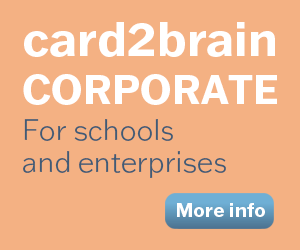MAIO
-
-
Set of flashcards Details
| Flashcards | 368 |
|---|---|
| Language | Français |
| Category | Computer Science |
| Level | University |
| Created / Updated | 31.05.2025 / 09.06.2025 |
| Weblink |
https://card2brain.ch/cards/20250531_maio?max=40&offset=160
|
| Embed |
<iframe src="https://card2brain.ch/box/20250531_maio/embed" width="780" height="150" scrolling="no" frameborder="0"></iframe>
|
Give the 4 Barriers to AI in Decision Making
Lack Causality
Black Box Nature
Algorithmic Aversion
Organization Inertia
What are the 3 LAdder of causation ?
1. Association: P (Y = y | X = x):
How likely is it a customer who bought keyboard also buys mouse?
2. Intervention: P (Y=y| do (X=x))
What will happen to mouse sale if we double the price of keyboard?
3. Counterfactual P(YX=x’| X = x)
We know we sold at price x’, what would have happened had we sold at price p2
A practical definition of Causality:
X causes Y if and only if changing X leads to a change in Y, while keeping everything else constant.
What is Algorithmic Aversion ?
Algorithmic Aversion:
Behaviour of discounting algorithmic decisions with respect to one’s own decisions or others’ decisions, either consciously or unconsciously.
If algorithms are better forecasters than humans, then people should choose algorithmic forecasts over human forecasts.
However, they often don’t. In a wide variety of forecasting domains, experts and laypeople remain resistant to using algorithms, often opting to use forecasts made by an inferior human rather than forecasts made by a superior algorithm
Give somes examples of algorithmic aversion
General negative perception about algorithms1
Lack of trust2
Fear of changing behavior due to algorithm adoption3
Preconceived expectation of near perfect decisions from algorithms4
Perceived responsibility5
Moral obligation to follow own decision6
Give some mitigation foor algorithm aversion
Giving people some control: people were more likely to choose an algorithm if they could modify the content of its predictions.
Reduce algorithm aversion through experience and learning
Transparency
What is Organizational Inertia ?
The process of adopting and diffusing technology within organizations, as well as actions taken in response to generated insights, necessitate fundamental
organizational transformation. However, organizations resist or dampen such changes resulting in overall failure of the newly adopted technology, often labelled organizational inertia.
AI is likely to introduce fundamental changes within companies, including how decisions are formed and how authority is delegated. Such changes may entail large-scale transformations of processes and structures.
How Mitigate Organizational Inertia ?
Overcoming organizational inertia requires suitable frameworks that demonstrate the benefits and costs in adopting AIt requires new incentives that encourage exploration of AI and foster stronger collaborations between various organizational units and AI teams (e.g., research funds or new organizational roles).
It requires a transformation workforce that oversees the adoption of AI and acts to overcome organizational resistance. Such teams may, for instance, contain a mix of inside managers, AI experts, and operational staff, as well as outside AI experts and consultants.
What are the 4 Challenges of AI Projects ?
1. Probabilistic rather than deterministic: How to define ”good enough”, art of model building, a variance of model outputs
2. High technical risk (data needs and quality, model limitations)
3. Much more up-front work required (correct data issues, identify features)
4. Often requires change management (changes organizational and user workflows, build model trust)
What is CRISP-DM?
• Developed in 1996 by a European consortium of companies
• Developed as a flexible, industry-agnostic approach to data mining projects
• Still the most widely used data science project methodology
How does purchasing behaviour affect co-creation?
● The number of orders placed has a positive non-linear effect both in short-term and long-term co-creation
● The number of different limited-edition products bought has a positive nonlinear effect in short-term co-creation. However, this effect is weaker for long-term co-creation
● Time from the last purchase has a negative non-linear effect both in short-term and long-term co-creatio
for 6.1 System deploy, what are Important System Deployment Trade-offs ?
Latency
cost
Troughput
What are the 4 Model Issues in Production ?
Training - serving skew
Excessive Latency
Data Drift
Concept Drift
In Model Issues in Production, for Training - serving skew, what are problems ?
• A mismatch between the training data and the input data while in production
• Often results from training on artificially constructed or cleaned datasets
• Typically manifests itself immediately after moving into production
In Model Issues in Production, for Excessive Latency ?
• Latency in generating predictions can vary based on
• Data pipeline
• Choice of model
• Volume of input data
• Low latency is critical for online and edge models:
• Autonomous driving systems
• Unlocking a phone
In Model Issues in Production, for Data Drift ?
• The Data Drift means the distribution of data changes over time to time.
• Typically caused by
• Population shifts
• Adversarial reactions
• Results in shifting distribution of features
• Model performance degrades on the edges of feature space
In Model Issues in Production, what is the problem for Concept Drift ?









